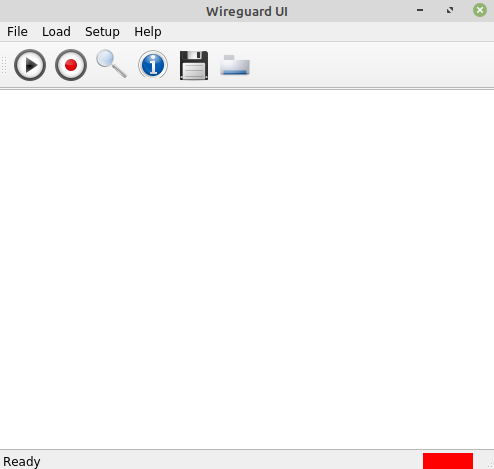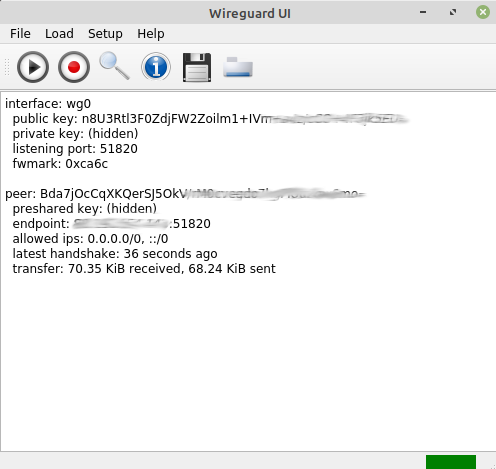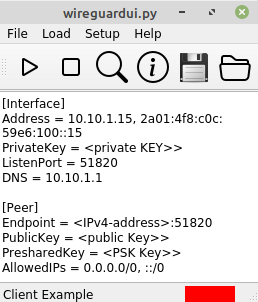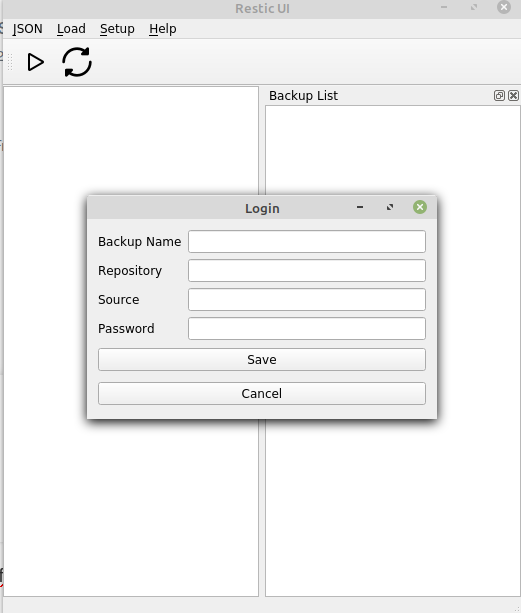Ich habe noch was Code gefunden, den ich mal dringend aufräumen musste Wenn ich mit dem Restic UI die Snapshots anzeige, dann sieht das so aus.
reading repository password from stdin
ID Time Host Tags Paths
----------------------------------------------------------------------------
4e769748 2021-12-31 21:48:34 frank-MS-7C37 /home/frank/Bilder
34298934 2022-01-26 20:15:53 frank-MS-7C37 /home/frank/Bilder
0d5d88f2 2022-01-27 21:05:07 frank-MS-7C37 /home/frank/Bilder
f0e7d5a7 2022-01-29 13:46:12 frank-MS-7C37 /home/frank/Bilder
79918d70 2022-01-29 13:52:56 frank-MS-7C37 /home/frank/Bilder
d74272a3 2022-01-30 11:54:20 frank-MS-7C37 /home/frank/Bilder
11b0b5ad 2022-01-30 11:57:44 frank-MS-7C37 /home/frank/Bilder
4a7450d2 2022-02-20 09:35:56 frank-MS-7C37 /home/frank/Bilder
c1a4a51d 2022-02-20 09:36:43 frank-MS-7C37 /home/frank/Bilder
d178ded5 2022-02-20 09:38:53 frank-MS-7C37 /home/frank/Bilder
997e2259 2022-02-20 16:35:57 frank-MS-7C37 /home/frank/Bilder
3320ad5c 2022-02-20 16:49:19 frank-MS-7C37 /home/frank/Bilder
----------------------------------------------------------------------------
12 snapshots
Mich interessieren die IDs, weil ich bei der Eingabe der IDs überprüfen möchte, ob die eingegebene ID existiert. Also muss ich das irgendwie auslesen und speichern. Das habe ich bis jetzt so gemacht.
def id_append(self, result):
# We split the result into individual lines.
# Result was passed. And create an list.
result_list = result.split('\n')
# We count the number of repositories and search for 'source'.
count = result.count(backup_data[row].source)
# Offset added, first interesting line is line 3!
count = count + 3
# We loop through the list and output the ID's and store in snapshot_id
x = 3
while x < count:
a = result_list[x]
y = a[0:8]
snapshot_id.append(y)
x = x + 1
Das erschien mir heute, beim erneuten Betrachten, Spaghetticode zu sein. Machen wir das mal etwas ordentlicher.
Ich nehme die Ausgabe (stdout) und erzeuge eine Liste, jede Zeile ein Element.
result_list = result.split('\n')
Sieht so aus
['reading repository password from stdin', 'ID Time Host Tags Paths', '----------------------------------------------------------------------------', '4e769748 2021-12-31 21:48:34 frank-MS-7C37 /home/frank/Bilder', '34298934 2022-01-26 20:15:53 frank-MS-7C37 /home/frank/Bilder', '0d5d88f2 2022-01-27 21:05:07 frank-MS-7C37 /home/frank/Bilder', 'f0e7d5a7 2022-01-29 13:46:12 frank-MS-7C37 /home/frank/Bilder', '79918d70 2022-01-29 13:52:56 frank-MS-7C37 /home/frank/Bilder', 'd74272a3 2022-01-30 11:54:20 frank-MS-7C37 /home/frank/Bilder', '11b0b5ad 2022-01-30 11:57:44 frank-MS-7C37 /home/frank/Bilder', '4a7450d2 2022-02-20 09:35:56 frank-MS-7C37 /home/frank/Bilder', 'c1a4a51d 2022-02-20 09:36:43 frank-MS-7C37 /home/frank/Bilder', 'd178ded5 2022-02-20 09:38:53 frank-MS-7C37 /home/frank/Bilder', '997e2259 2022-02-20 16:35:57 frank-MS-7C37 /home/frank/Bilder', '3320ad5c 2022-02-20 16:49:19 frank-MS-7C37 /home/frank/Bilder', '----------------------------------------------------------------------------', '12 snapshots', '']
Diesmal benutzen wir die enumerate() Funktion
for count, value in enumerate(result_list):
print(count, value)
Das was raus kommt, sieht so aus
0 reading repository password from stdin
1 ID Time Host Tags Paths
2 ----------------------------------------------------------------------------
3 4e769748 2021-12-31 21:48:34 frank-MS-7C37 /home/frank/Bilder
4 34298934 2022-01-26 20:15:53 frank-MS-7C37 /home/frank/Bilder
5 0d5d88f2 2022-01-27 21:05:07 frank-MS-7C37 /home/frank/Bilder
6 f0e7d5a7 2022-01-29 13:46:12 frank-MS-7C37 /home/frank/Bilder
7 79918d70 2022-01-29 13:52:56 frank-MS-7C37 /home/frank/Bilder
8 d74272a3 2022-01-30 11:54:20 frank-MS-7C37 /home/frank/Bilder
9 11b0b5ad 2022-01-30 11:57:44 frank-MS-7C37 /home/frank/Bilder
10 4a7450d2 2022-02-20 09:35:56 frank-MS-7C37 /home/frank/Bilder
11 c1a4a51d 2022-02-20 09:36:43 frank-MS-7C37 /home/frank/Bilder
12 d178ded5 2022-02-20 09:38:53 frank-MS-7C37 /home/frank/Bilder
13 997e2259 2022-02-20 16:35:57 frank-MS-7C37 /home/frank/Bilder
14 3320ad5c 2022-02-20 16:49:19 frank-MS-7C37 /home/frank/Bilder
15 ----------------------------------------------------------------------------
16 12 snapshots
17
Mich interessieren nur die Zeilen mit /home/frank/Bilder Das kann man so abfragen
if backup_data[row].source in value:
Und jetzt nur die ID entsprechend abspeichern
snapshot_id.append(value[0:8])
Sieht jetzt komplett so aus
result_list = result.split('\n')
for count, value in enumerate(result_list):
if backup_data[row].source in value:
snapshot_id.append(value[0:8])
print(count, value[0:8])
Somit speichert er jetzt nur noch die IDs, der folgenden Ausgabe.
3 4e769748
4 34298934
5 0d5d88f2
6 f0e7d5a7
7 79918d70
8 d74272a3
9 11b0b5ad
10 4a7450d2
11 c1a4a51d
12 d178ded5
13 997e2259
14 3320ad5c
Diese IDs, kann ich dann weiterverarbeiten.








